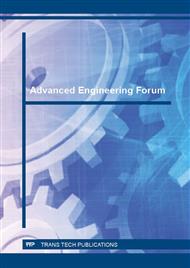p.1
p.7
p.16
p.24
p.33
p.52
p.69
p.82
p.91
Modelling and Optimization of Tool Chip Interface Temperature and Surface Roughness in CNC Dry Turning of EN 24 Steel
Abstract:
Abstract. Kinetic energy of a machining process is converted into heat energy. The generated heat at cutting tool and work piece interface has substantial impact on cutting tool life and quality of the work piece. On the other hand, development of advanced cutting tool materials, coatings and designs, along with a variety of strategies for lubrication, cooling and chip removal, make it possible to achieve the same or better surface quality with dry or Minimum Quantity Lubrication (MQL) machining than traditional wet machining. In addition, dry and MQL machining is more economical and environment friendly. In this work, 20 no. of experiments were carried out under dry machining conditions with different combinations of cutting speed, feed rate and depth of cut and corresponding cutting temperature and surface roughness are measured. The no. of experiments is determined through Design of Experiments (DOE). Nonlinear regression methodology is used to model the process using Response Surface Methodology (RSM). Multi-objective optimization is carried using Genetic Algorithm which ensures high productivity with good product quality.
Info:
Periodical:
Pages:
7-15
Citation:
Online since:
April 2016
Authors:
Keywords:
Price:
Сopyright:
© 2016 Trans Tech Publications Ltd. All Rights Reserved
Share:
Citation:


